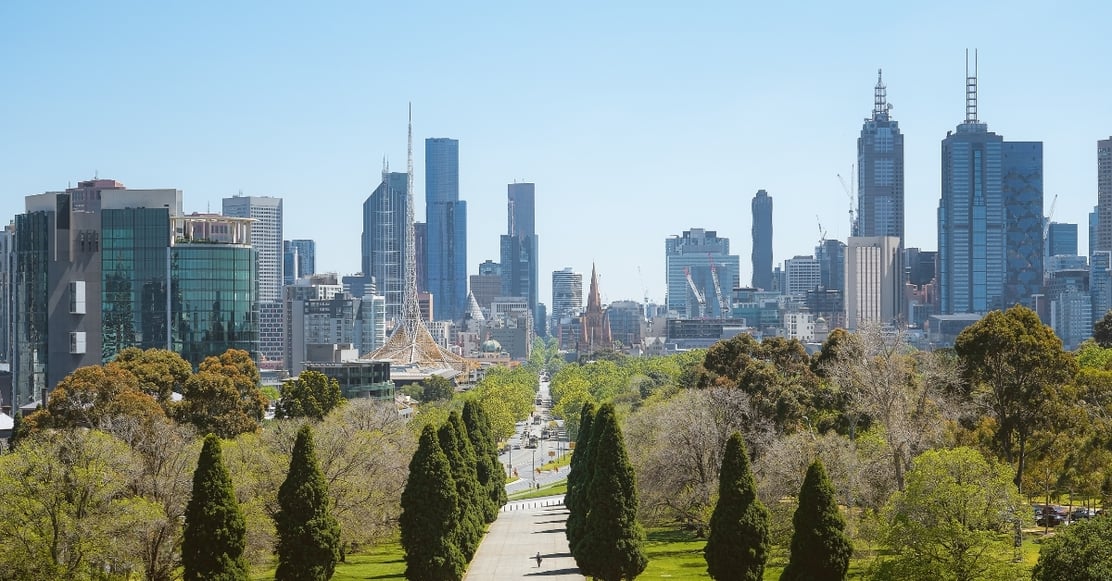Understanding Land Tax in VIC: What You Need to Know

Affordability is drawing investors back to Victoria, but recent tax reforms mean it is essential to do your research and stay informed of how these changes may impact your portfolio.
The new framework is complex and includes a temporary adjustment to the land tax threshold, a surcharge for vacant properties and a levy for short-stay rentals. All have been introduced to boost revenue as part of the State Government’s COVID debt repayment plan.
This guide covers who pays land tax, who’s exempt, how it is collected and importantly how to factor recent reforms into your investment budget.
Who pays land tax in Victoria?
Land tax in Victoria is calculated annually on the value of property (excluding any structures) as of midnight on December 31.
It applies to more than just one type of property, it can include residential home, apartments, commercial premises and industrial properties. It may able be payable on car spaces, shops, factories, warehouses, vacant or rural land. Holiday homes are also subject to land tax, even if they don’t generate an income.
Who is exempt from paying land tax in Victoria?
You may be wondering do you need to pay land tax in Victoria or does your property qualify for an exemption?
The good news is that land tax isn’t charged on a person’s primary place of residence. There are also several other exemptions such as social housing and emergency housing, residential care facilities, residential services for people with disabilities, retirement villages and caravan parks. There are also some discounts offered for build-to-rent developments.
How is land tax calculated in Victoria?
The new temporary land tax surcharge is applied to landholdings from $50,000 (for non-trustees) or $25,000 (for trusts) and upwards. The value is determined by the Valuer General Victoria and are also used by local council to calculate rates.
The appropriate land tax rate is multiplied by the total taxable value of land holdings. Here is the current guide to work out how general land tax is calculated in Victoria:
| Total taxable value of land holdings | Land tax payable |
| < $50,000 | Nil |
| $50,000 to < $100,000 | $500.00 |
| $100,000 to <$300,000 | $975.00 |
| $300,000 to <$600,000 | $1350 plus 0.3% of amount > $300,000 |
| $600,000 to < $1,000,000 | $2250 plus 0.6% of amount > $600,000 |
| $1,000,000 to < $1,800,000 | $4650 plus 0.9% of amount > $1,000,000 |
| $1,800,000 to < $3,000,000 | $11,850 plus 1.65% of amount > $1,800,000 |
| $3,000,000 and over | $31,650 plus 2.65% of amount > $3,000,000 |
Remember different land tax rates in Victoria apply to trusts and absentee owners. You can use a land tax calculator to work out a general estimate here or for land trusts here.
When do you pay land tax in Victoria?
You will receive a notice of assessment between January and July if your property is valued above the temporary $50,000 threshold.
If this is the first time you have received such notification, it may be due to becoming the owner of taxable land due to an investment property or holiday home, if your combined taxable land value is above the threshold or previously exempt land is no longer precluded.
You have 60 days from the date of issue to check that your assessment is correct. It is important to update your details such as removing properties you no longer own or updating your primary home on the My Land Tax portal.
Don’t forget that the owner of the land on December 31 is responsible for paying the land tax for the following year, even if the property is sold.
Don’t ignore your obligations. If you have not put aside enough money to cover your land tax, a payment plan can offer a solution. It allows the payment to be broken down into smaller amounts and spread across a set period.
Understanding recent tax reforms in Victoria
Taking a proactive approach to tax reforms when investing in Victoria is key to building a successful portfolio. It means budgeting ahead of time, knowing your obligations and consulting with a specialist who can help to minimise costs.
In addition to adjusted land tax thresholds, there are several other changes implemented by the State Government. These include:
- Absentee Owners Surcharge – Owners not residing in Australia or who own land through a foreign corporation incur an additional tax surcharge on their land holdings. This is paid in addition to land tax.
- The Vacant Residential Land Tax (VRLT) - This is charged on any vacant residential land across the state that sits unused for more than six months in a year. It now applies to all vacant land in Victoria. This is paid in addition to regular land tax. Investors can only avoid paying it by developing or leasing out the site.
- Short-stay levy – a levy of 7.5 per cent has been introduced on the rental income of properties listed on websites such as Airbnb and Stayz, if they are let for more than 90 days per annum. There are some exemptions.
LJ Hooker is here to help
When you are ready to start or add to your property portfolio in Victoria, be sure to contact your nearest LJ Hooker agent. They are specialists who are experienced in helping people looking to get started in investing and can access property databases and valuation tools.
Importantly, they understand the Victorian land tax reforms can assist in navigating these changes. The Melbourne CBD remains a desirable market buoyed by strong population growth, new infrastructure projects, broad economic activity and importantly affordability.
Become a tax-smart investor by getting all your documentation in order from the start. This includes knowing what expenses can be claimed and declaring all rental-related income in your annual tax return.
FAQs about land tax in Victoria
Let’s take a re-cap at some of the main information you need to know to better understand land tax when investing in property in Victoria.
Do you pay land tax on vacant land in Victoria?
Yes. From 1 January 2026, the Vacant Residential Land Tax (VRLT) will be extended to land in metropolitan Melbourne that has remained undeveloped for a continuous period of five years or more and is capable for a residential development. VRLT is different to regular land tax but is also an annual charge. The tax can also be applied to residential land even if there’s already a home on it or that has been left empty for more than six months. It can also be applied to a house or residential unit that is under construction or uninhabitable. Exemptions may be available – check here.
Does everyone in Victoria have to pay land tax?
You don’t need to pay land tax on your primary place of residence. However, you will be issued with assessment on investment properties, including residential rental homes. Commercial properties such as retail shops, offices and factories.
Do you have to pay land tax on a holiday home in Victoria?
A holiday home may be exempt from vacant residential land tax if you or close relatives use it for at least 4 weeks in the calendar year. It does not need to be consecutive weeks. Close relatives include your partner, your children and their partners as well as parents and grandparents. Claims can be substantiated by keeping a diary.
Does Victoria have the highest land tax?
According to the Australian Financial Review, Victoria claims the national crown for imposing the highest property taxes. It is currently forecast to generate 47 per cent of the State Government funding over the next four years.
Do pensioners pay land tax in Victoria?
Pensioners pay no land tax for the primary principal of residence in Victoria. If a person moves into aged care or a retirement home, they may be exempt from paying both land tax and VRLT.
DISCLAIMER - The information provided is for guidance and informational purposes only and does not replace independent business, legal and financial advice which we strongly recommend. Whilst the information is considered true and correct at the date of publication, changes in circumstances after the time of publication may impact the accuracy of the information provided. LJ Hooker will not accept responsibility or liability for any reliance on the blog information, including but not limited to, the accuracy, currency or completeness of any information or links.
Share


